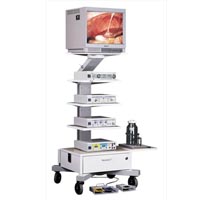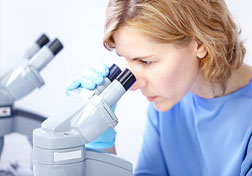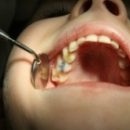Today, laparoscopic operations are widely used in gynecology in the treatment of various uterine pipe diseases, ovaries and uterine. After laparoscopy comes faster recovery of the patient. The advantage of laparoscopy is the ability to treat infertility.
Content
Laparoscopic operations in endometriosis
 Endometriosis is a common disease of women of childbearing age. In this case, cell diseases like endometrial cells, i.e. the uterine mucosa, are found outside the uterus, for example, on the abdominal cavity of the small pelvis, in the fallopian tubes, on the ovaries. These cells grow up, form microcastics, with time they cause fragments of small pelvis organs. Running on the ovaries, these cells often lead to the appearance of endometrioid cyst. In addition, endometriosis is a very frequent cause of infertility, even with so-called small forms.
Endometriosis is a common disease of women of childbearing age. In this case, cell diseases like endometrial cells, i.e. the uterine mucosa, are found outside the uterus, for example, on the abdominal cavity of the small pelvis, in the fallopian tubes, on the ovaries. These cells grow up, form microcastics, with time they cause fragments of small pelvis organs. Running on the ovaries, these cells often lead to the appearance of endometrioid cyst. In addition, endometriosis is a very frequent cause of infertility, even with so-called small forms.
It is now generally recognized that the development of endometriosis - the endometrium cell entering during menstruation with blood through the flowable uterine pipes in the abdominal cavity. The peculiarity of this disease is that it cannot be reliably diagnosed by conventional methods. Indirect signs of endometriosis are separating allocations before and after menstruation, pain in the inspection on the chair, periodic pain in sexual life.
Accordingly, the World Health Organization, Laparoscopy is recognized as the only reliable method of diagnosing endometriosis. During the operation, foci of endometrioid ovarian cysts are destroyed. The most effective recognized the diagram of two-stage treatment of endometriosis - after the operation of the patient for several months, preparations receive drugs of diferlin, or zoladex, or decapeptyl. If a patient after such an operation goes to an extracorporeal fertilization, it can be assigned a superdiline protocol - ovulation stimulation after several months of reception of such drugs.
For infertility treatment with laparoscopy
Accordingly, the classification of the World Health Organization Reason for infertility cannot be established completely until diagnostic and / or therapeutic laparoscopy. Laparoscopy is shown to patients who determine the violations of uterine pipes in hysterosalpingography (x-ray), as well as patients who, in spite of the confirmed pipe permeability, regular menstrual cycle, a normal hormonal background and a normal sperm of her husband, does not occur pregnancy.
Of course, laparoscopy is shown to patients who have tumors of uterus, caisters of appendages or there is a suspicion of the adhesion process in a small pelvis. In addition, if the patient with hydrosalpinx (by the cluster of the liquid in the uterine pipe) goes to the extracorporeal statement, it is strongly recommended to remove the patient pipe, as against the background of stimulation, the hydraulpinx is often emptied into the uterine cavity, hitting the endometrium, preventing implantation, negatively affecting embryos.
Laparoscopy in the treatment of prolapse (loss) of the pelvic bottom
Prolapse (loss) of the pelvic bottom or its omission, usually begins in the menopacteric period due to a decrease in tone tone. Gradually, the internal organs begin to drink, pelvic bottom to sign, it disrupts the work of the intestine, the urethra, violates the blood supply to the uterus. But sometimes, for example, after childbirth, a large fruit or after numerous labor it can happen in a younger age. There are special laparoscopic operations to strengthen the pelvic bottom. In their basis - stitching bundles with each other, the mixing of special strengthening artificial tapes.
Laparoscopic operations in the treatment of yarkenecological diseases
Urbitecology - part of the gynecology, which studies the urethra system of women, violations of its functioning and methods for the correction of these violations. Features of the Urination System Women (short and almost direct uropener channel, separating from the bladder at a certain angle, the location of the channel next to the uterus, sharply increasing during pregnancy) lead to the fact that there are often stress incontinence with urine. This means that with the slightest increase in pressure in the abdominal cavity - lifting heavy bags or child, laughter, cough, sneezing and t.NS. Unprobally, a small amount of urine is distinguished.
This is a heavy test leading to constant stress, social self-insulation, often to the abandonment of sexual life due to the fear of urine release during sexual act. Given the special relevance of this problem, surgeons developed a huge number of surgical methods for the treatment of stress incontinence of urine. The overwhelming majority of them do not apply, some have proven their high efficiency and therefore widely used.
An example of the latter is the laparoscopic operation of Bercha - the urethra with a special ribbon pulls up to the lane bones of the pelvis, while the angle of the urinary bubble and urethra is formed to hold urine, and the necessary support is provided to.









